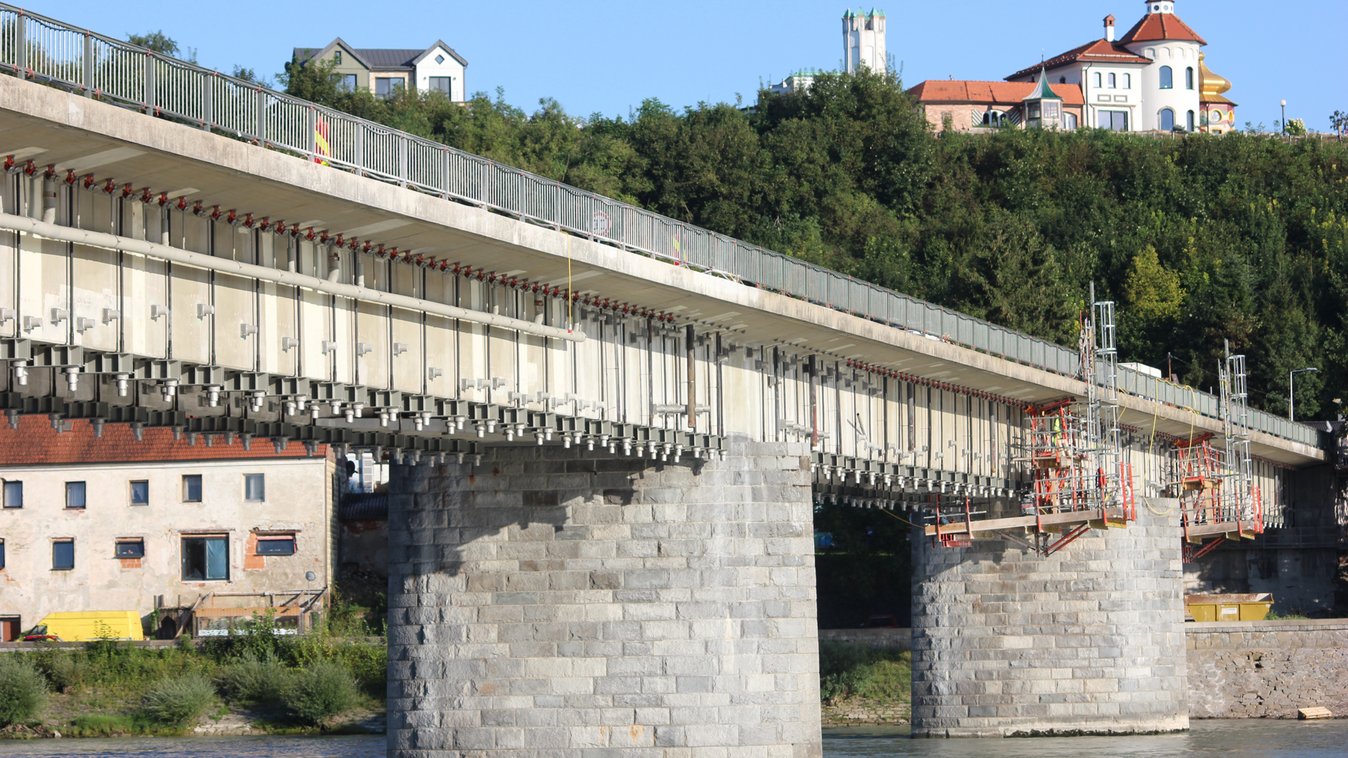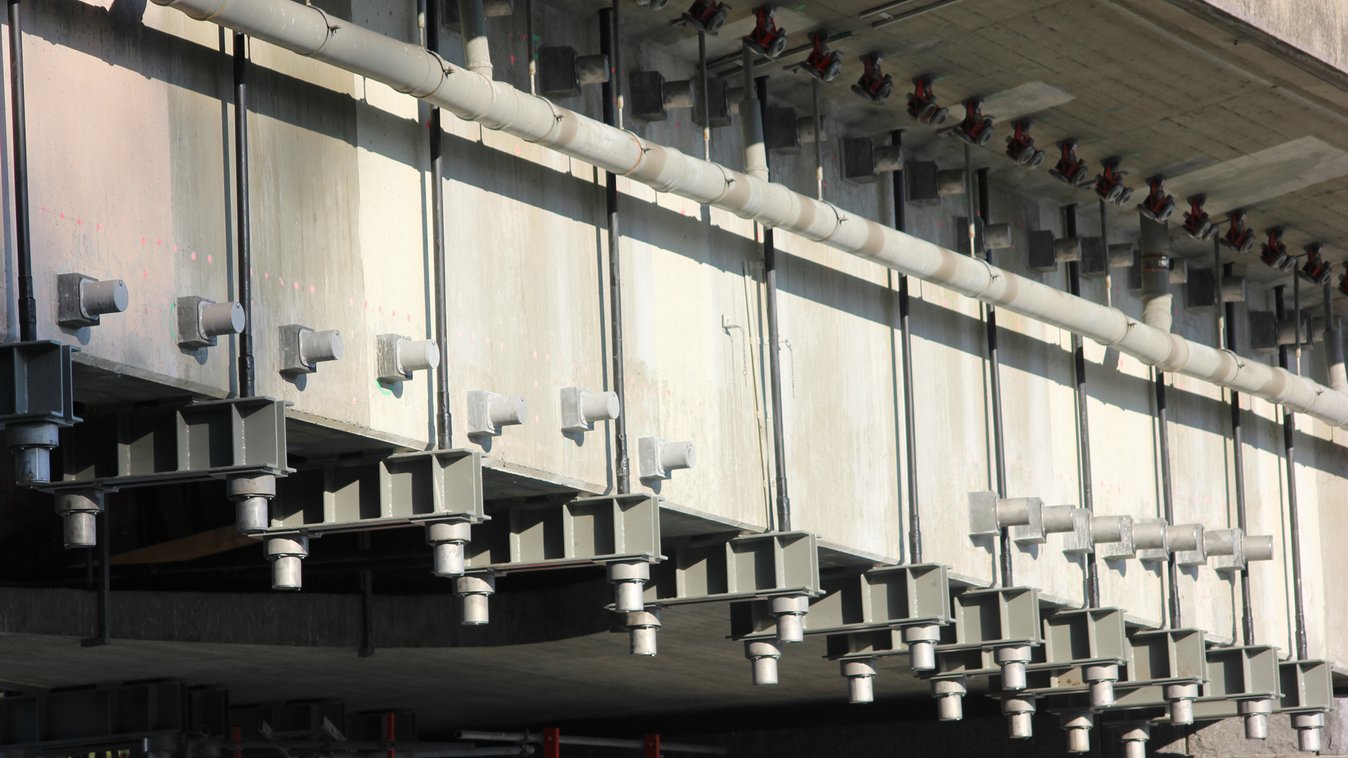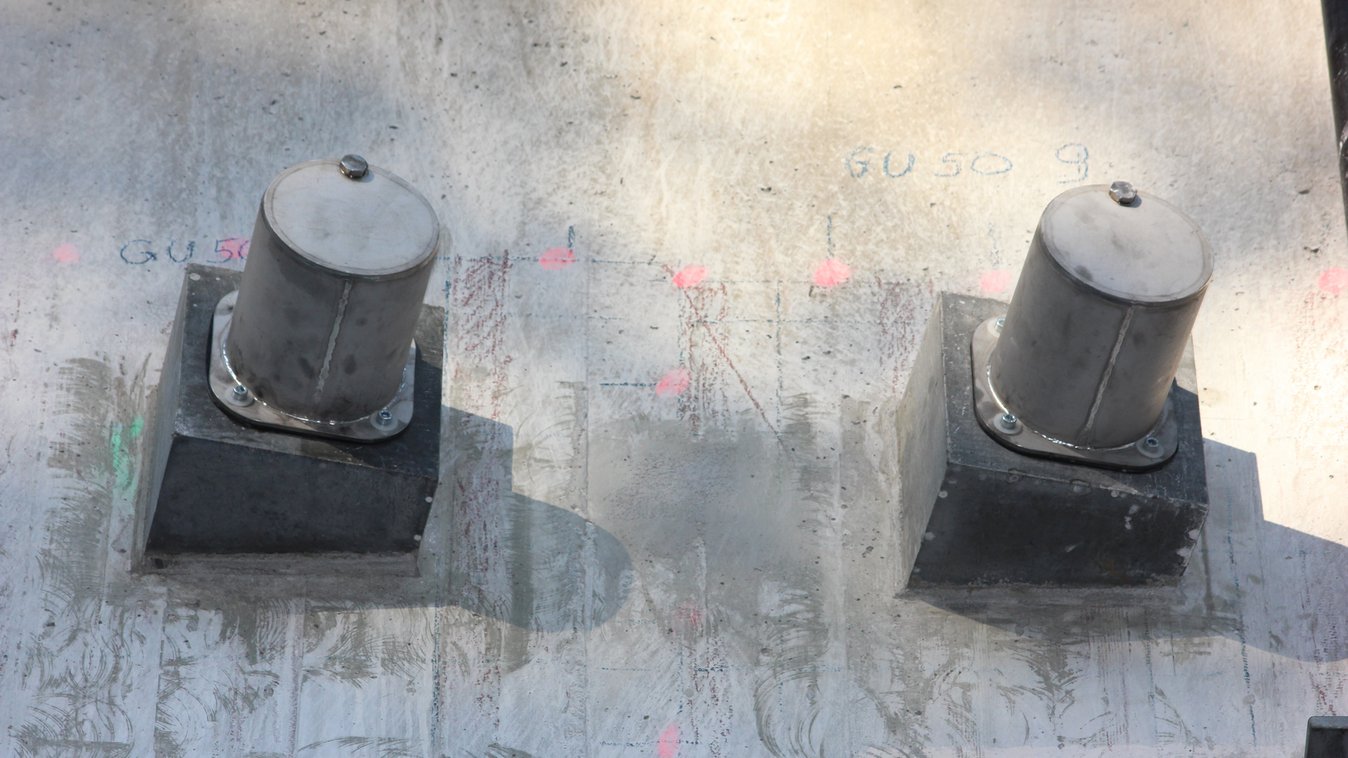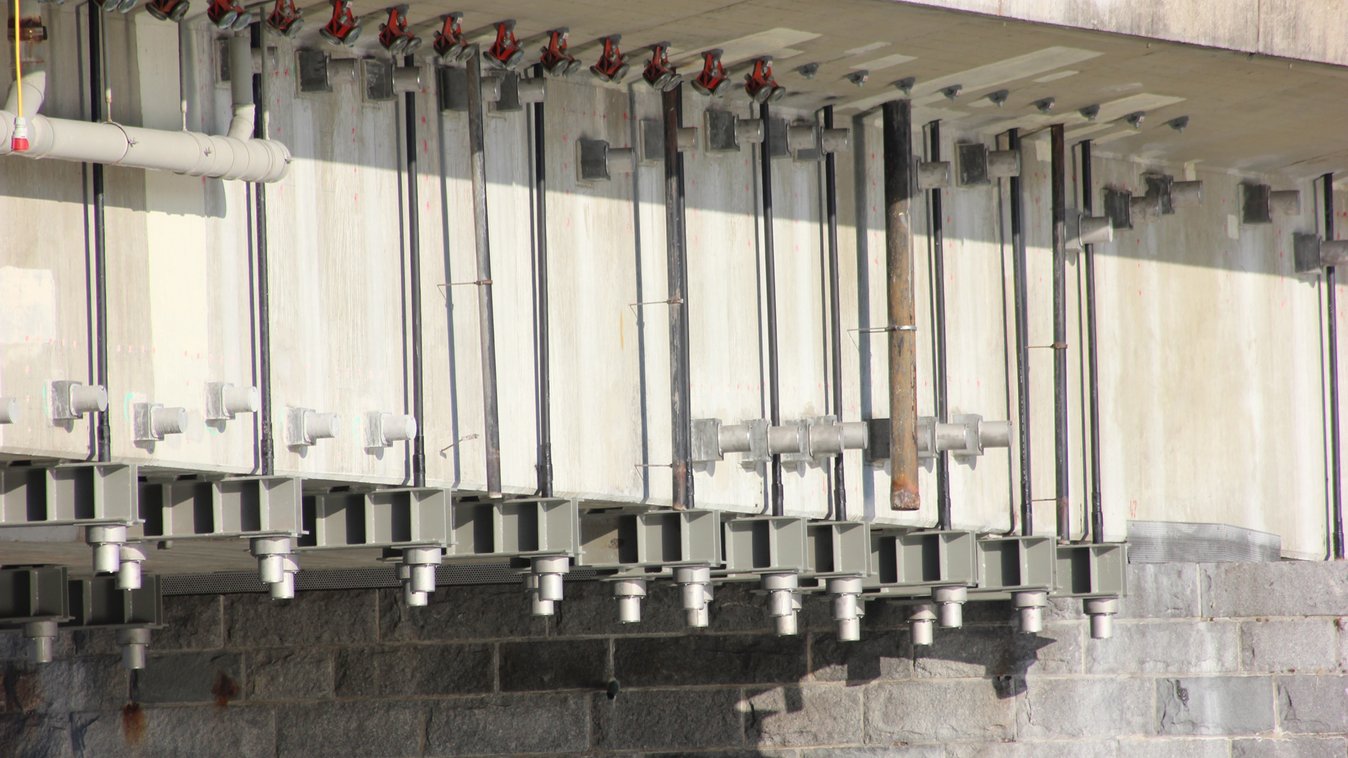





Strengthening of Inn bridge, Eggelfing/Obernberg
Short description
Strengthening of a stressed concrete bridge over the river Inn, using post-tensioning bar tendon system.
The project
The approximately 380-metre-long bridge over the River Inn was built in 1963. The original bridge construction was constructed as a double webbed T-Beam with additional pressure zones near the axis of the river supports.
Due to the increased traffic loading, the bridge was required to be structurally reinforced with post-tensioned bar tendons. Work commenced in August 2023, and was originally planned to be completed by the end of 2023, however due to unforeseen constructions issues is now expected to be completed by end of August 2024.
The BBV 1030 bar tensioning system according to ETA-16/0286 and aBG for bar tendons in accordance to Z-12.4-138:
- Additional provision of stirrup reinforcement at the bottom of the concrete webs using horizontal bar tendons (d=32)
- Strengthening of vertical shear force/torsional reinforcement (d=32)
- Strengthening of the chord connection of the deck slab to absorb bending and shear, horizontal (d=36 and d=40)
- Strengthening of the chord connection of the bottom slab to absorb centric tension, horizontal (d=36 and d=40)
- Remediation to the coupler joint in the tension area incl. installation of anchor blocks, inclined and horizontal (d=32)
Approx. 1600 new core holes were drilled into the existing superstructure in order to install the new bar tendons.
New steel beams were installed below the pedestrian zone, to allow the provision of new stressing anchors for additional bridge transversal strengthening works. Furthermore, threaded anchor plate were adopted for the fixed anchor. The threaded anchor plates were selected in order to avoid additional washer and nuts and therefore the installation profile could be kept to an absolute minimum (approx. 60 mm).
All visible anchor plates were prefabricated from UHPC concrete. This innovative hybrid anchor provided advantages over conventional steel solutions, primarily in its geometric flexibility and low weight.
In the bridge remediation works, round anchor plates with a stainless steel ring were adopted to cater for the vertical shear reinforcement. Geometrical flexibility was also achieved via the anchor plates near the chord connection: In this project, it was possible to dispense with any additional wedge plate made of steel, generally required for conventional construction, as the hybrid anchor plates could be manufactured at the required angles between the structural and tensioning axis. Additionally, the durability of the UHPC concrete meant no further corrosion protection was required, in stark contrast to a conventional steel anchor plate solution.
Services in detail
BBV 1030 bar tensioning system with bar tendons to Z-12.4-138 to ETA-16/286 and aBG
Sustainability
The useful life of the bridge has been extended by 25 years as a result of the remedial works.
Further information
- Structural Engineer: KMP ZT-GmbH, Linz
- Engineering office/ structural engineer: matrics engineering GmbH, Munich
